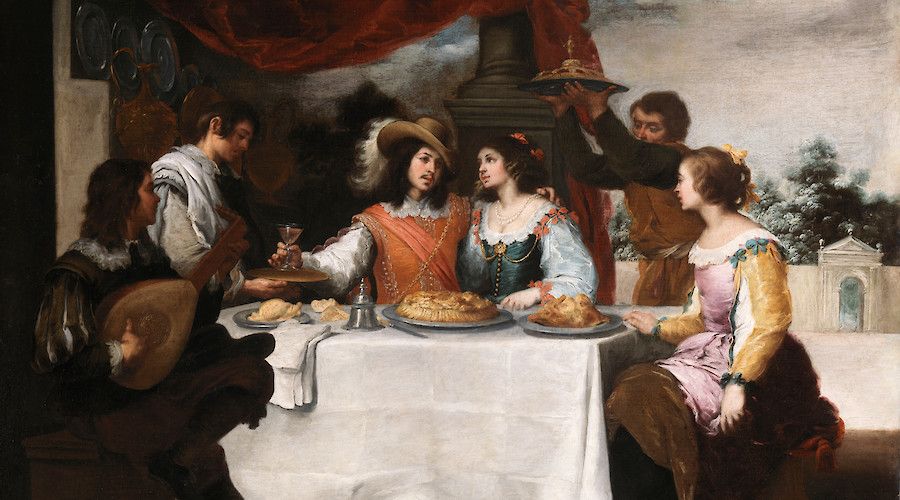Murillo: Picturing the Prodigal Son

“Murillo: Picturing the Prodigal Son” features some of the painter’s most famous works sharing some new information thanks to the restoration processes carried by the National Gallery of Ireland.
Murillo: Picturing the Prodigal Son is the first collaboration between the Meadows Museum and the National Gallery of Ireland (NGI) and was inspired by the NGI’s recent restoration of Murillo’s series, which included cleaning and extensive technical analysis. Conservation revealed new information about the artist’s technique, which is explored in the exhibition catalogue. Other key works in the exhibition will be on public view for the first time following significant conservation.
During the 1660s, Sevillian artist Bartolomé Esteban Murillo (1617–1682) set out to paint the biblical parable of the prodigal son (Luke 15:11–32). Many artists tackling this subject focus on the story’s conclusion –that is, the prodigal son’s return from squandering his inheritance to be welcomed by his father’s forgiveness rather than his wrath. Murillo’s depiction, however, draws out the drama into a narrative cycle of six large canvases. Indeed, Murillo’s paintings represent the first time a Spanish artist painted the story in serial form.
Murillo skillfully embellished the narrative, conveying the story’s themes of virtue and vice, regret and forgiveness, through the figures’ dramatic gestures and facial expressions. Each composition is at once singular and dynamic despite its preservation of narrative continuity. It is therefore all the more remarkable that the series has remained intact, the only by Murillo to be so, despite changing hands many times since its creation during one of the artist’s more prolific decades. Since 1987, the paintings have been in the collection of the National Gallery of Ireland in Dublin.
In 2022, all six canvases will travel to the United States for the first time to be featured at the Meadows Museum, their only venue in this country. Picturing the Prodigal Son was inspired by the recent conservation work and the extensive technical analysis of the canvases carried out in Dublin, which has highlighted the beauty of Murillo’s technique and revealed new insights into his working method at a critical point in his career. The exhibition therefore marks a rare opportunity for American audiences to view an important painting series by Murillo in its entirety, just as it was created to be seen.
Loans of two additional paintings by Murillo –The Return of the Prodigal Son (1667/1670) from the collection of the National Gallery of Art, Washington, on view for the first time since its recent conservation, and The Prodigal Son Among the Swine (1656–65) from The Hispanic Society of America, New York– will allow visitors to view the entirety of Murillo’s finished paintings on the subject.
Sixteen engravings and etchings on loan from the National Gallery of Art, Washington, and the Metropolitan Museum of Art, as well as books from The Hispanic Society and SMU’s Bridwell Library, will provide a comprehensive presentation of the artist’s contemporary source material on the topic of the prodigal son. The exhibition is accompanied by a fully illustrated catalog featuring entries by Meadows Museum Interim Director and Curator Amanda W. Dotseth, the exhibition’s curator, and essays by Jessica A. Boon, University of North Carolina, Chapel Hill; Aoife Brady, National Gallery Ireland; Peter Cherry, Trinity University, Dublin; Muirne Lydon, National Gallery Ireland; and Pauline Swords, Russborough House, Ireland.
About Bartolomé Esteban Murillo
Bartolomé Esteban Murillo (1617–1682) is among the most celebrated painters of Baroque Spain and his works are enduringly popular among international collections. Although Murillo frequently painted religious subjects for his patrons in Seville, the prodigal son parable was somewhat unusual for the time. This exhibition therefore brings together a select group of 16th- and 17th-century images that take different approaches to the visualization of the same story.
While the episode near the end of the parable –the son’s return home to his forgiving father– is most widely recognized as the pivotal moment of the story, Murillo expands the narrative into six parts focused on the son’s actions and their consequences before concluding with his return home. The series demonstrates Murillo’s skill at staging and visualizing narrative; each painting’s composition is independently representative but also cues sequential reading and the collective experience of the series as a whole.